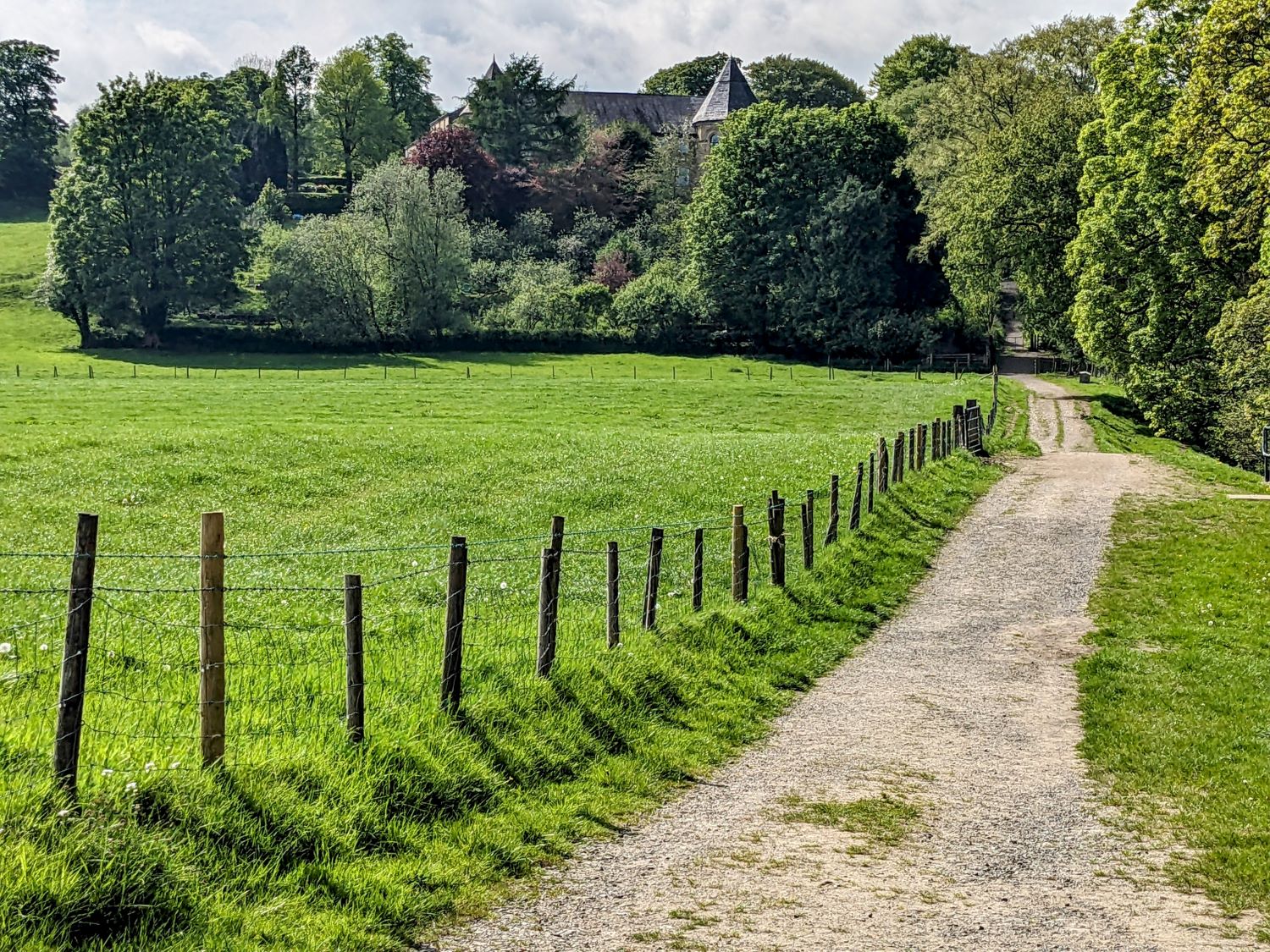
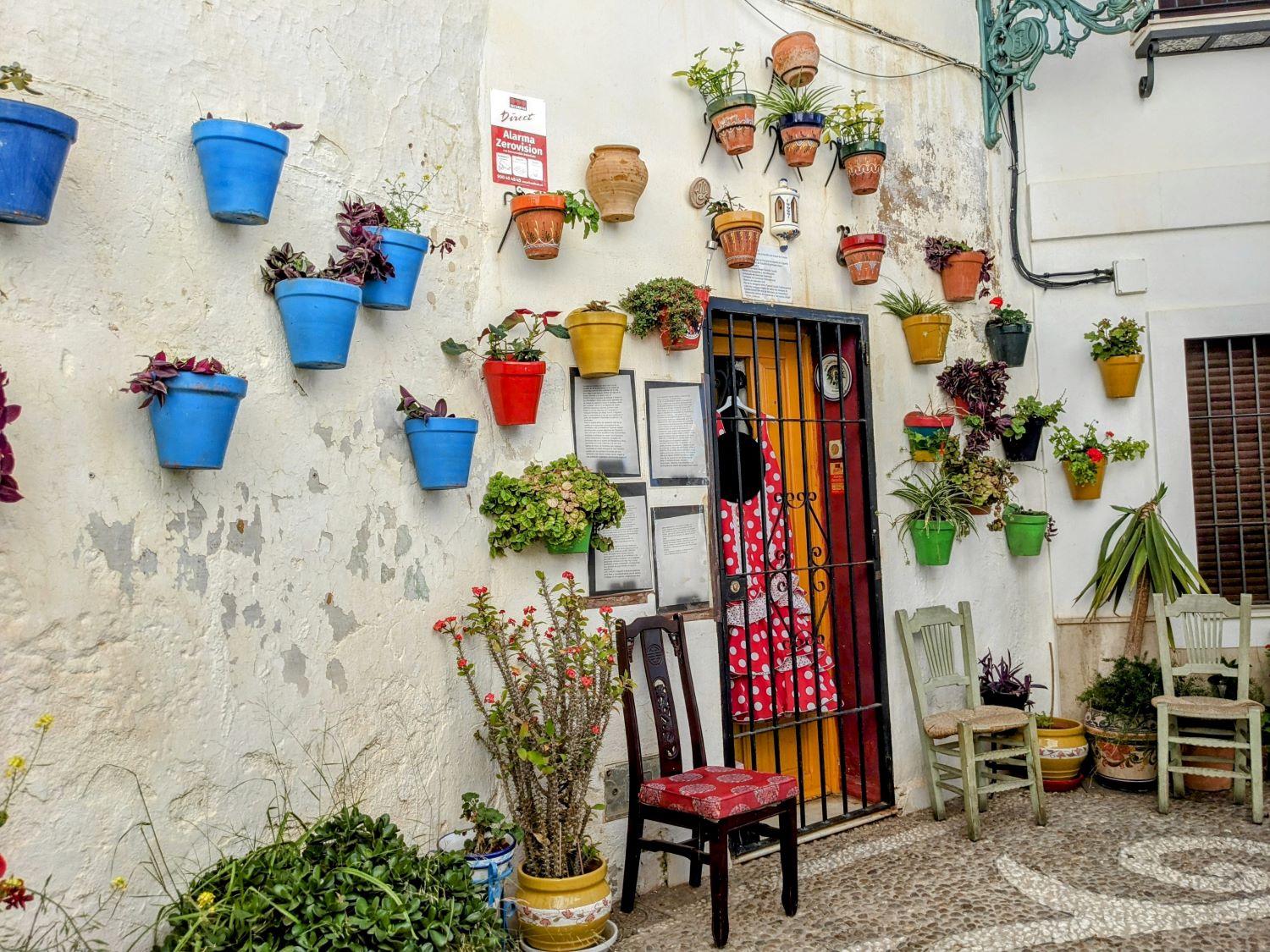
Members of my family and others I know will every once in a while create a ‘photo dump’ on social media – downloading sometimes dozens of photos from a certain timeframe or event. Well, today, I am creating a ‘travel dump,’ and will tell you about some of the fascinating places I’ve visited recently in northern England and coastal Spain. Beware! At 4,000 words, this is not a blog for the faint of heart!
Coastal Spain
I’ve travelled enough now to know what appeals to me, and I find I am not really attracted to large European cities. Not that I’ve been to a boatload, but they often have the same big-city, touristy feel. Their cultural allure for me is undeniable – the museums, the little tucked away local restaurants, the architecture, the big markets – but I think from now on I’ll try to find accommodation in smaller towns easily accessible to a city. After all, I’m not tripping the light fantastic much anymore, either!
With that proviso in mind, I want to share some thoughts about the time I spent this spring near Malaga on the coast of Spain. Malaga, population 576,000, and, further south on the coast, Torremolino (pop. 68,000) and Fuengirola (pop. 75,000) are popular winter destinations for Irish holidaymakers. You can see the allure. Plenty of holiday rentals at all price points, regular flights from most Irish airports, and the beachy warm Mediterranean. At the beginning of April, when I was there, it was 70 and perfectly sunny every day. I actually went just to get a short break from the unremitting cold and gray of western Ireland, and it was indeed an elixir.
I opted to stay north of Malaga, in the small city of Nerja (pronounced Nerka). With a population of about 21,000, it’s similar in size to the likes of Portsmouth, NH, near my hometown in Maine and Ennis, Ireland, near my home here. While still full of vacationers and snow birds alike, it is an easy city to navigate and has many beaches. It suited me much better than Malaga would have done and is only an hour bus ride away; but when I ran into a woman who lives in a small fishing village just up the coast, I determined that if and when I come back, I’ll stay in Maro.
Nerja has little to recommend itself in terms of culture – I would get that in spades in Malaga – but has really lovely beaches that in April were not chockablock. I found one a bit far from the madding crowd one day. I started from the base of Balcon de Europa – a plaza perched on a high promontory – and basically wandered through tunnels of rock down the coastline until I found a beach comfortably full/empty with a scattering of families, couples and single folk. As I set down my sarong (indispensable for travel: skirt, shawl, beach blanket all in one), I noticed a woman around my age settling in not too far from me. After she laid out her towel, she proceeded to unselfconsciously take off her top and lay down front side up. Not long after that, another woman of the same vintage did the same. These were women with thick middles, saggy breasts, craggy faces – in short, my kind of peeps. My American puritanical notions surfaced momentarily but were quickly banished. It felt liberating just to see these women so comfortable in their own bodies and customs. In talking with a regular visitor to coastal Spain and Portugal later, I found out that nude bathing is quite normal.
Pedestrians rule the road there, which is so pleasant. There are no crosswalk signals on any street. Just step off the curb and all traffic both ways simply stops until you are on the other side of the crosswalk. What a civilized system! Housing in Nerja runs the gamut from €185,000 for a spacious studio to €850,000 for a place with a pool, jacuzzi and private dock. And as for food, tapas rule. Small, intimate tapas restaurants abound. And you certainly get value for your money. I got three tapas and a tonic water at one place, and it cost me less than €10.
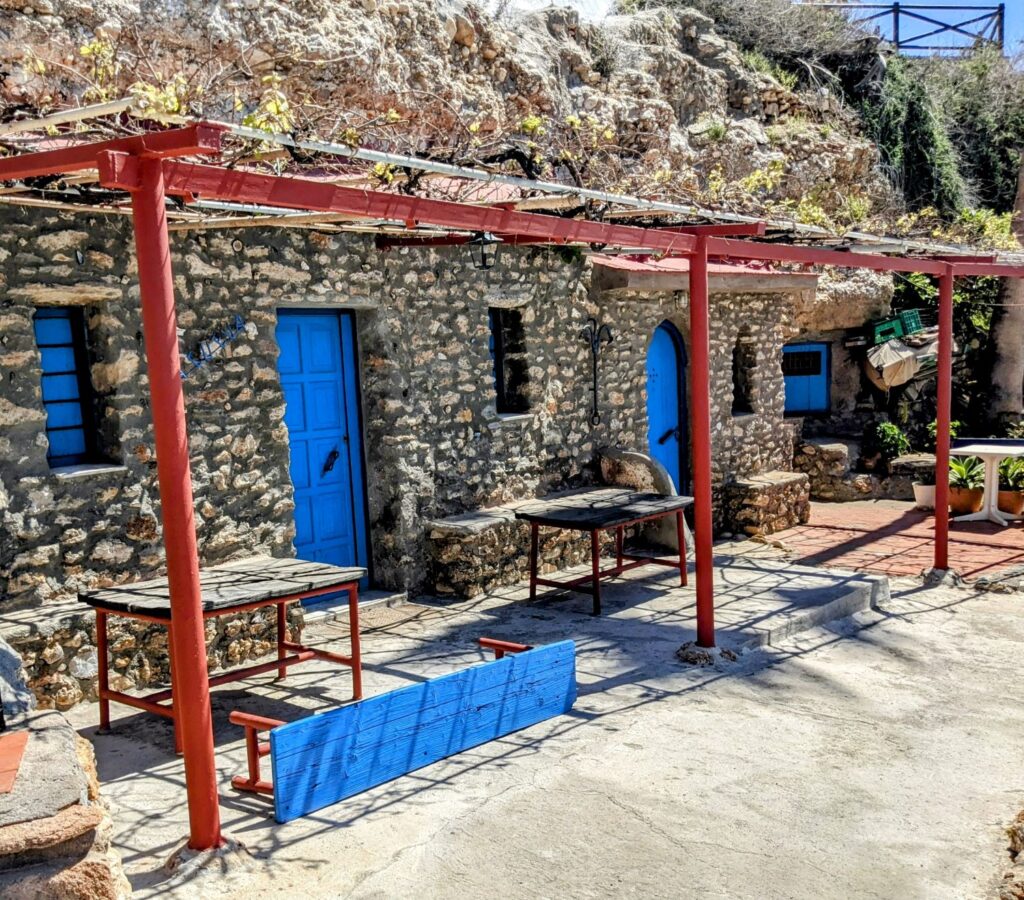
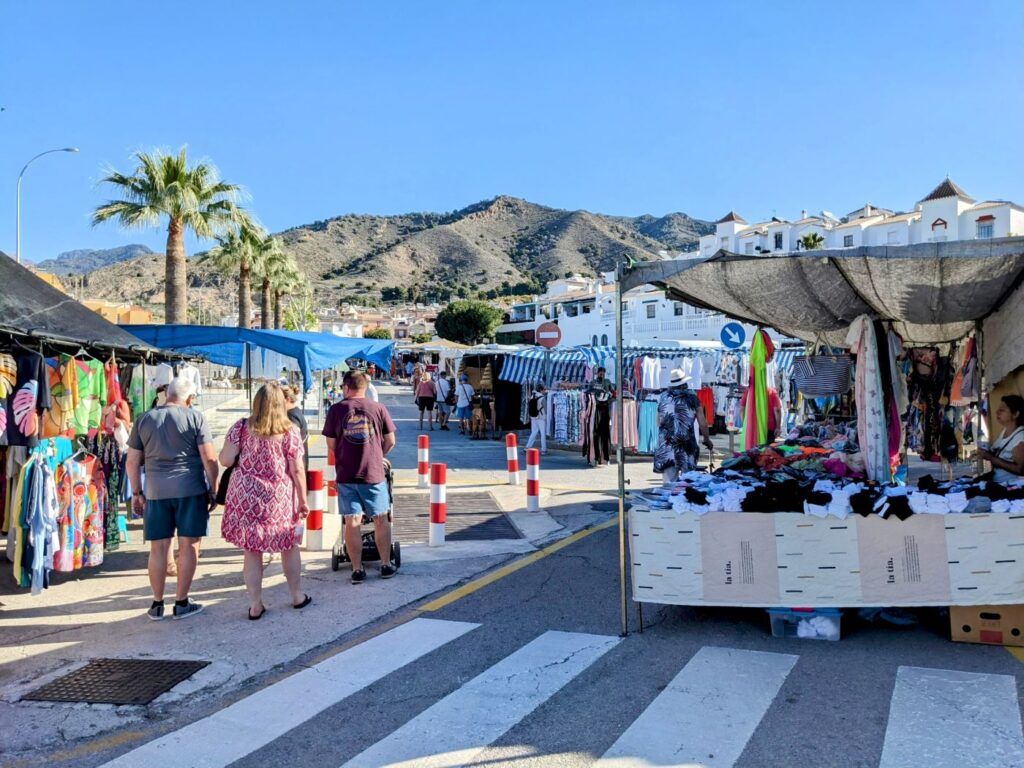
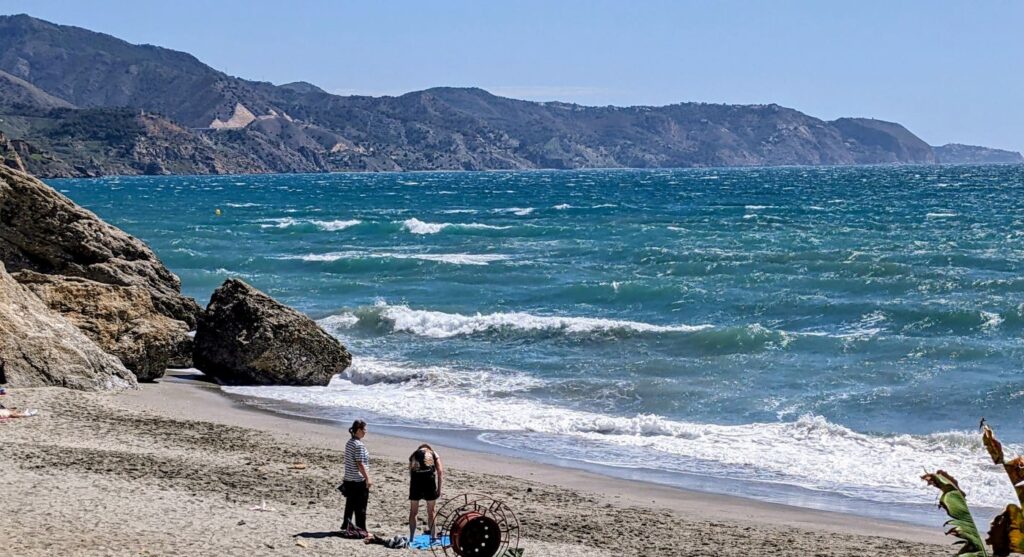
On my last day, I took the bus from Nerja to Malaga, along a stunning coastal route with the Andalusian mountains on one side and the Mediterranean on the other. As I had limited time in Malaga, I went right for the cultural. And boy, was I rewarded.
I admit that Picasso’s work is an acquired taste, one (shockingly to me!) not universally enjoyed. I would argue that it is still fascinating to view the progression of genius of any artist (even, for me, someone like Jackson Pollack, who I totally don’t get). And for that reason alone, Museo Picasso Malaga – situated in the heart of the old town in an 1847 palace – is well worth the visit.
Picasso was born in Malaga, and apparently always had a fondness for his hometown. The museum is unique and quite remarkable in that the 233 donated works represent the bulk of the private collection of Christine Ruiz-Picasso, widow of the artist’s eldest son, and Bernard Ruiz-Piscasso, his grandson. These come from every period of his life and every medium, including sculptures and pottery, and are works you are not going to see in Paris or even Barcelona. Do get tickets online in advance, even if it’s only a few days before. The cost is €12 general admission, €10 for seniors. The day I went, the line for those without tickets was snaking forever. Because numbers are strictly controlled, I never felt sardined and could take all the time I wanted. FMI: https://www.museopicassomalaga.org/en
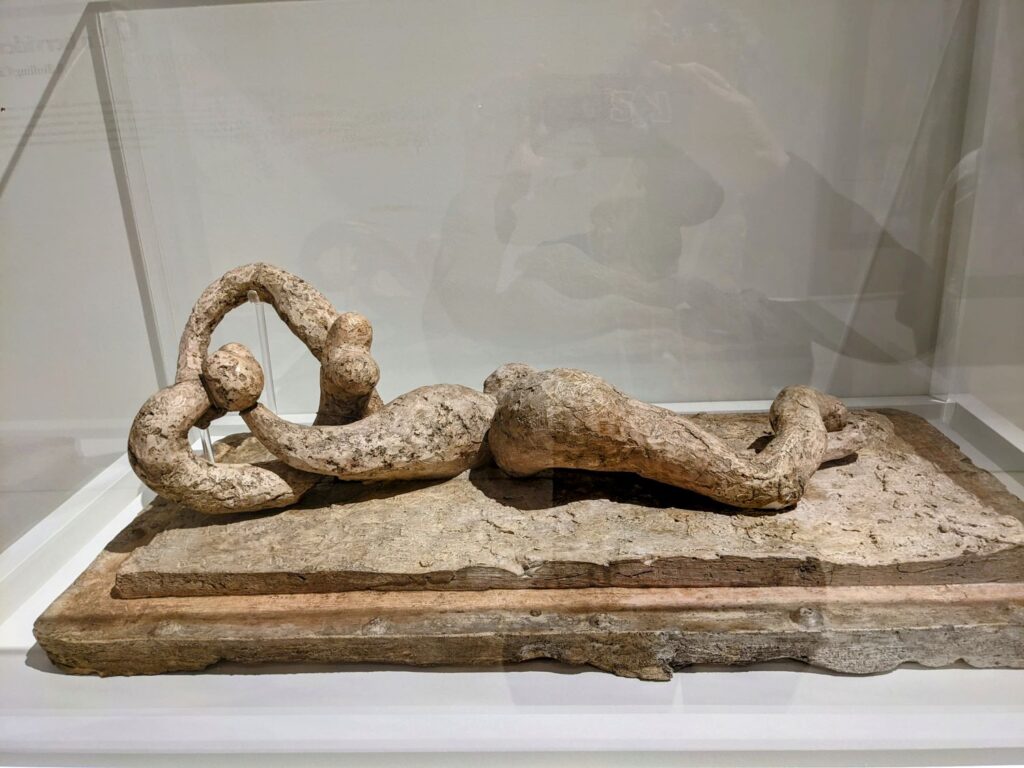

As popular as the Picasso Museum is, the other museum I visited is much more obscure, tucked down a quiet side street. The Museo del Vidrio y Cristal de Malaga comprises a 3,000-piece private glass and crystal collection that is, quite frankly, pretty mind-blowing. The owner bought an 18th century house which he restored specifically to display these pieces. I learned through our guide that he began amassing them when he was a child, and has never stopped. And so you’ll find pieces from prehistory to the present day, from all corners of the world and in many forms, including art glass and remarkable stained glass windows. I think my favorite was a cabinet containing pieces once owned by several different medieval Spanish kings, including Carlos I (1500-1558) and Carlos II (1661-1700). If glass fascinates you as much as it does me, this is a must-see museum. Tickets are a reasonable €7, €5 for seniors, students, children over 7, etc. FMI: https://www.museovidrioycristalmalaga.com

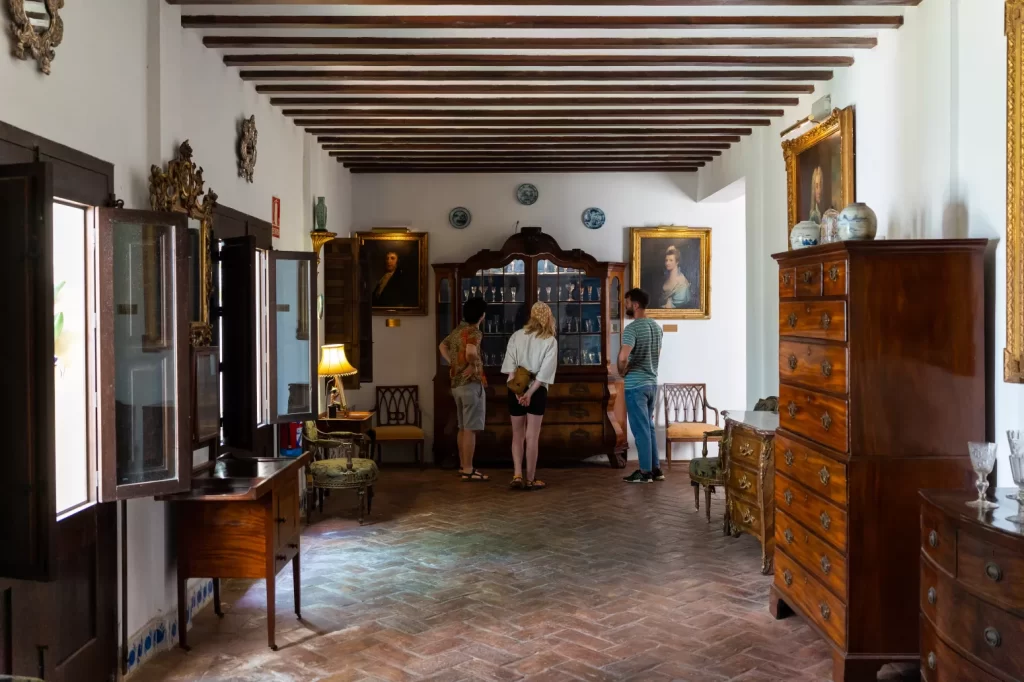
Lancashire, England
As regular readers of this blog know, I was in northern England in May to hang out with my new grandson, Flynn. I was there for the entire month, with time to spare to do some exploring. Lancashire is north of Manchester and Liverpool, a sprawling county of Irish Sea coastline and delightful countryside, and dominated by the Forest of Bowland (more about this place shortly). It was once a major textile manufacturer and still has many remnants of the industry seen in housing and factory buildings in the small and medium-sized cities mostly clustered to the south – and the area where I had set up temporary residence.
I went on many walks, visited a castle and historic house or two, and reveled in the rolling green hills that reminded me so much of Ireland. Except in Ireland, the landscape is pretty much unbroken while in Lancashire, towns are everywhere in profusion – the difference of a country of 56 million vs a country of 6 million. In any event, I thought I’d share a few of the highlights with you, in case your travels ever take you to this neck of the woods.
So I’m going to briefly regale you again with my art glass obsession. Back in 1893, Accrington native Joseph Briggs moved to New York City where he secured a job as a mosaic engraver with Louis Comfort Tiffany’s Tiffany Studios – parlaying talents he gained in textile printmaking in Accrington. When the Tiffany Studios went bankrupt in 1932 during the depression, Briggs sent three crates of glassware and decorative items to Accrington, which the city installed in its Haworth Art Gallery. On the second floor of this Victorian-era museum, in several totally unprepossessing rooms, is a most astonishing collection of Tiffany glass. Here are vases, mosaics, stained glass and more. It’s really startling to see the fruits of an American genius tucked away in a museum in Accrington, UK. It’s well worth the stop if you’re in the area. Admission is free, and there’s a wonderful shop and tearoom on site. FMI: https://haworthartgallery.org/
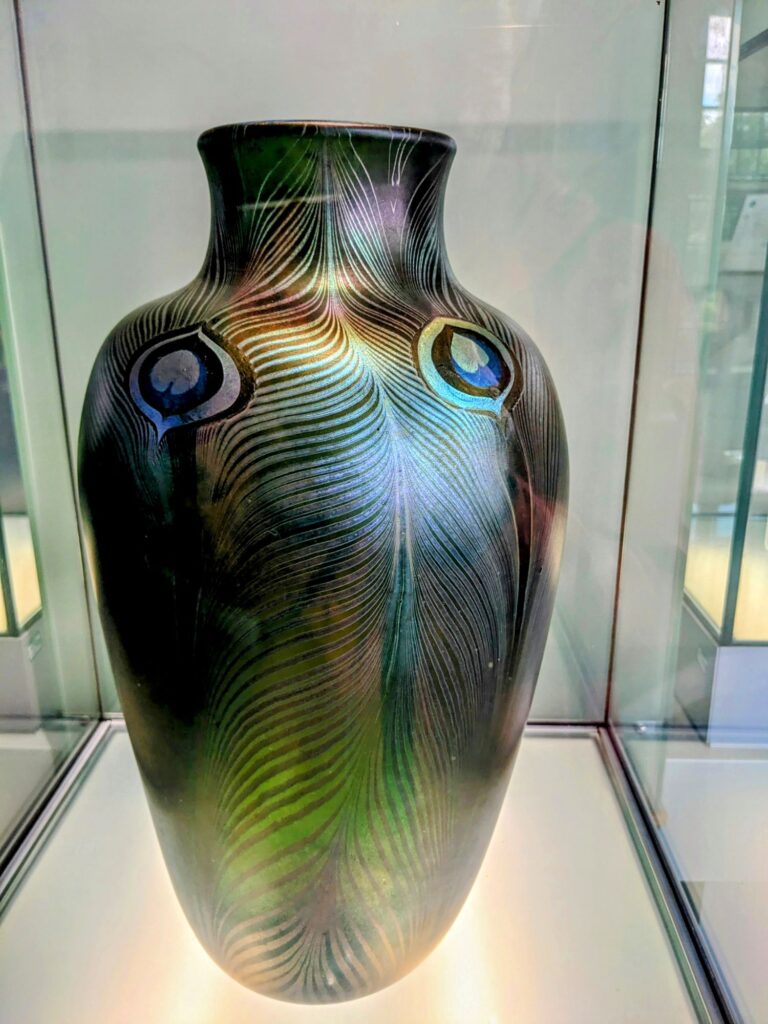
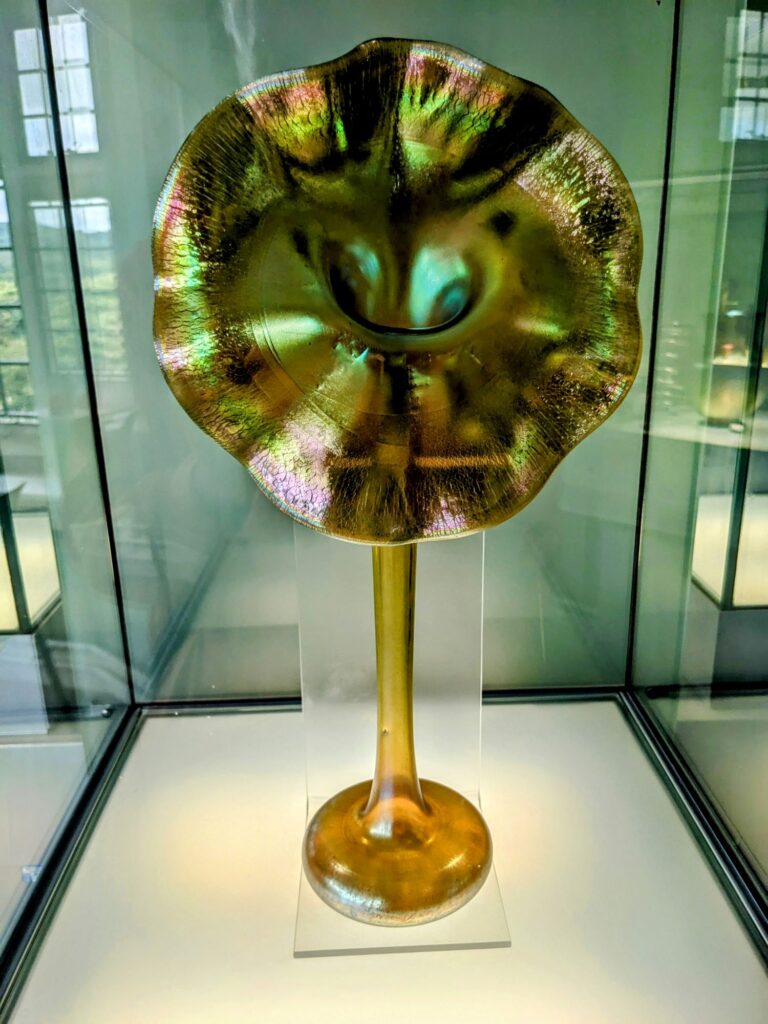
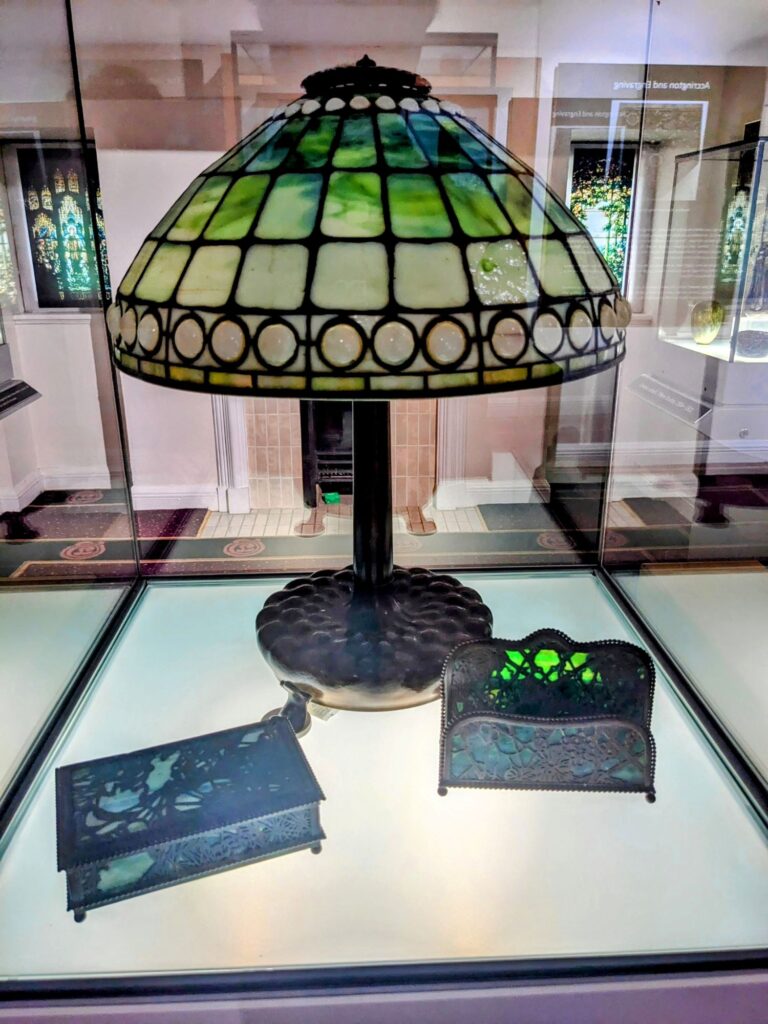
**In the first of a trio of literary homes I visited, my son-in-law’s mother and I traveled just over the Yorkshire border to the town of Haworth (yes, same spelling as above; must be a local name), home of the Brontës. The Brontë Parsonage, where resided the Irish-born clergyman Patrick Brontë (who changed his name from Brunty because he thought it sounded more impressive) and his daughters Charlotte, Emily, Anne and son Branwell (two others died in childhood). The parsonage is owned by the Brontë society, which opened it to the public in 1928. The society has worked over the years to amass as many documents as possible, retain as many pieces of furniture and family memorabilia and purchase as many items as possible that over the years went into private hands. The result is a truly memorable visit through time to the early 19th century when this remarkable trio of women called the parsonage home.
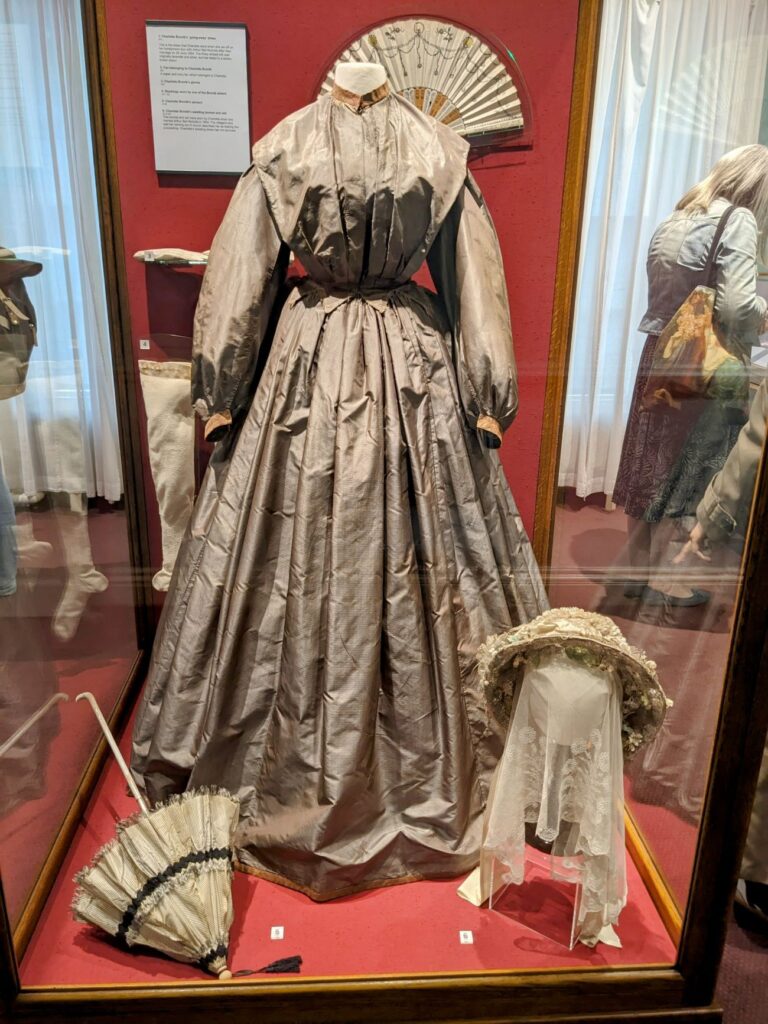
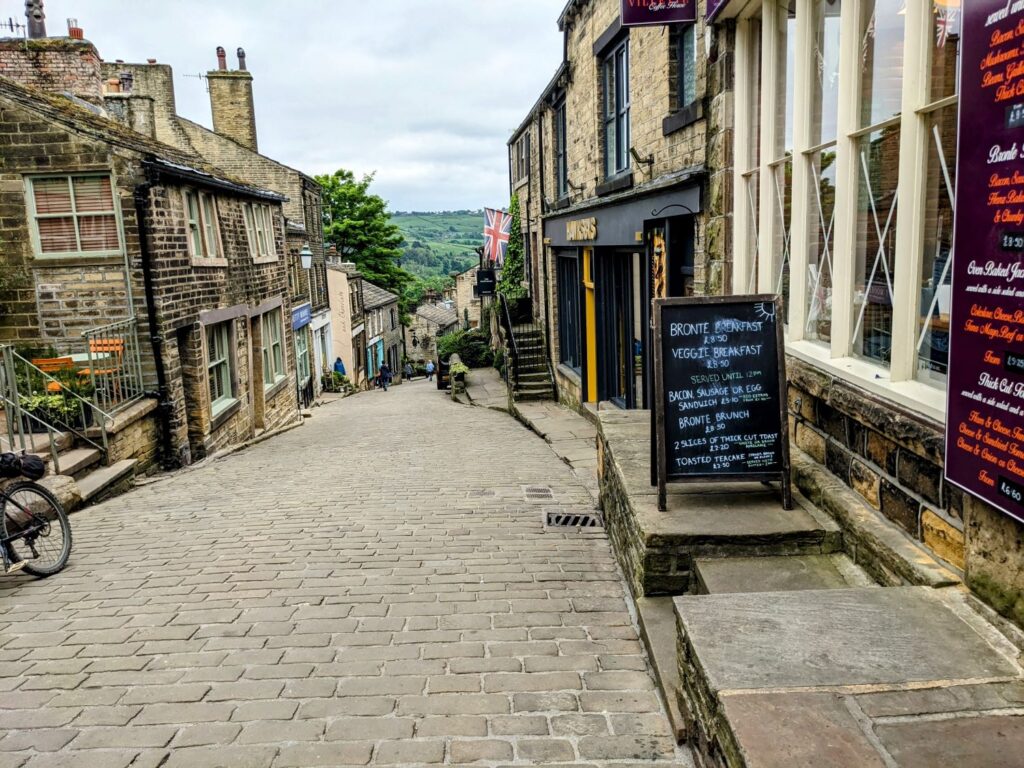
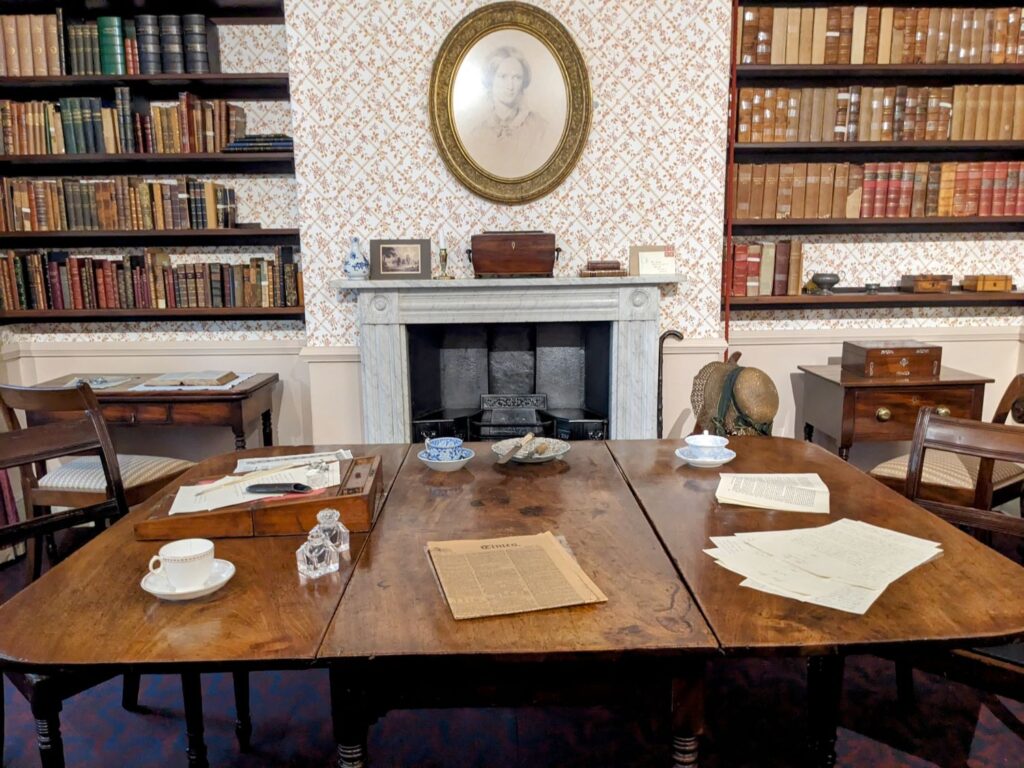
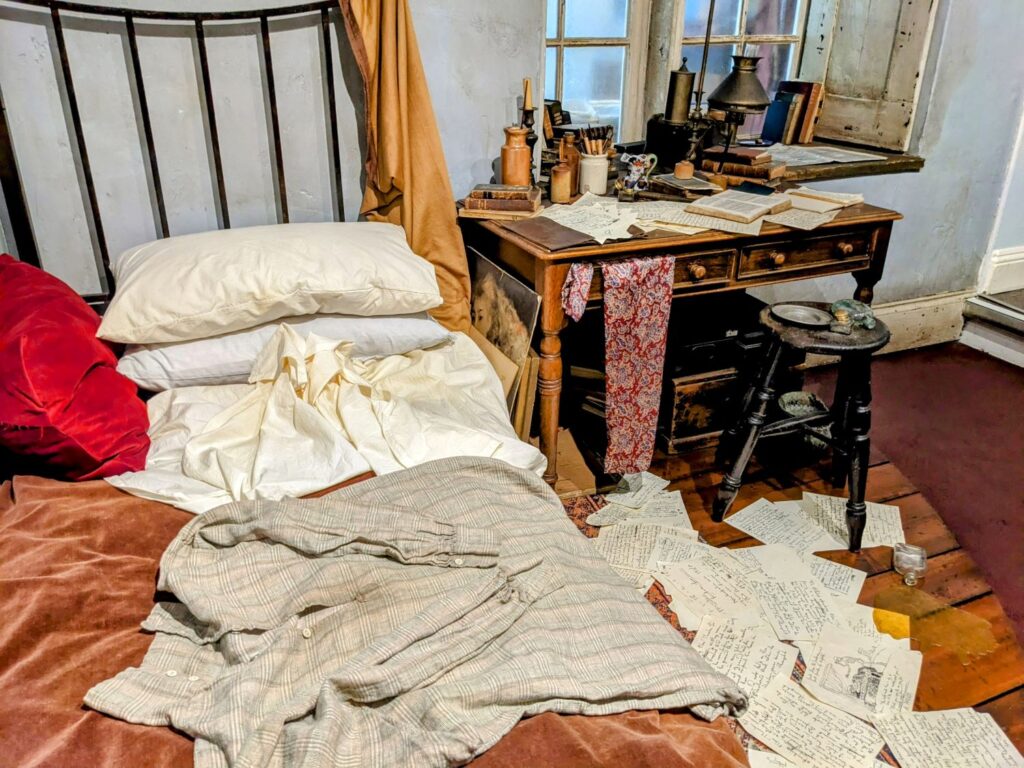
I will tell you a few of my personal highlights: The dining room, the original table tucked close to the fireplace and near shelves of books, is where all three sisters wrote during their most prolific period. You can almost hear the crinoline swish and the scratch of the pen on paper. Charlotte’s room contains, soup to nuts, her ‘going away’ dress and accessories, which she wore after her marriage in 1854. And in the Haworth Parish graveyard is interred every Brontë but Anne. BTW, they all died extraordinarily young: Maria, 11; Elizabeth, 10; Charlotte, 38; Branwell, 31; Emily, 30; Anne, 29 – most of tuberculosis, Charlotte of pregnancy complications. If I were to return, I would take the loop walk through the moors that starts behind the house. It is helpful to get tickets in advance; £12.50 general admission. FMI: https://www.bronte.org.uk/
One aside: Take time to peruse the many shops in the seemingly untouched village of Hawarth and eat a bite at one of the several (distinctly 21st century) restaurants. A second aside: I bought and am currently reading ‘Jane Eyre’ – which I first read in another lifetime. Once I became accustomed to the rather archaic 19th century language, I became smitten. She’s a master storyteller. ‘Wuthering Heights’ is next.
**I enjoy walking, even the occasional climb, and often went exploring while I was in England. I thought I’d share two experiences in particular.
You may recall from one of my blogs last year that I am a Tolkien nerd. It turns out that Tolkien and his family regularly stayed on the grounds of the Ribble Valley’s Stonyhurst College, where his son was studying for the priesthood. During this period, he was writing The Lord of the Rings, and local word has it that he found inspiration (Shire Lane, Shirebourn River, a local ferry that might have been the inspiration for Buckleberry Ferry) and penned portions of the book there. In any event, what is true is that Tolkien regularly took long rambling walks in the countryside wherever he was, and some enterprising folks matched his personal writings to the local landscape and came up with The Tolkien Trail. This is indeed a country ramble, over hill and dale, through forest and along the riverbank, marked by stiles and gates and bridges. I could almost see Frodo and Sam up ahead, although you hardly need a Tolkien connection to enjoy yourself.
Make sure you pick a day without rain in the forecast and give most of it to this walk, as it’s 9km/5.5 miles. It begins and ends in the quaint village of Hurst Green. I acquired an easy-to-follow printed map at the Shireburn Arms (where you could stop later for a pint or cup of tea and sustenance) or go to https://thetolkientrail.com/ for a downloadable map.
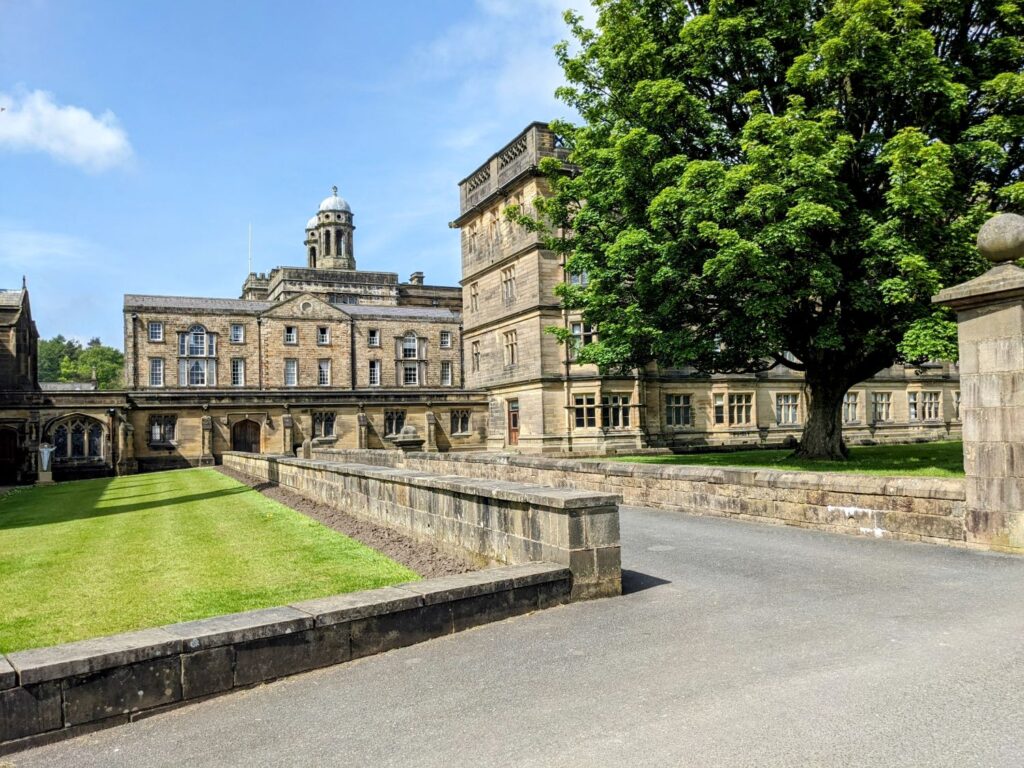
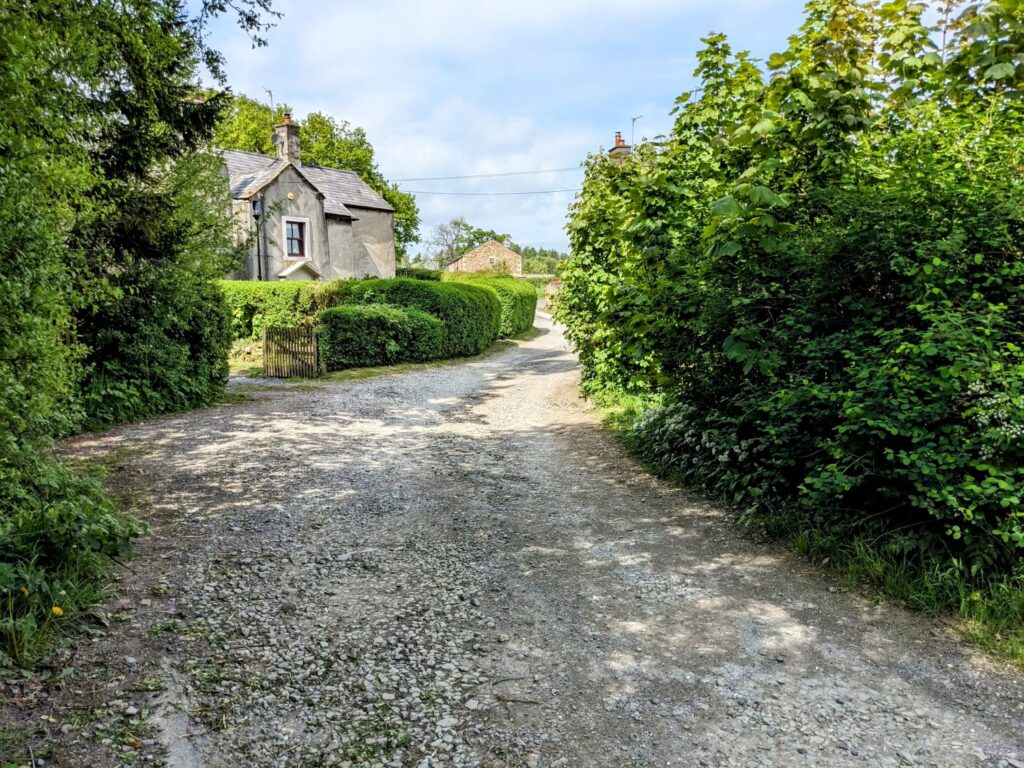
It’s difficult to miss Pendle Hill when traveling on the inland roads of eastern Lancashire, a sloping mountain with a distinctive plateau summit. The Pendle area is best known for a bout of witchcraft hysteria in 1612, which resulted in the conviction and hanging of 8 women and 2 men. Unfortunately, you are likely to see signage and paraphernalia of witches on broomsticks while in the area. Probably 8 years ago, when Bridget and Tom were dating, I spent Christmas with them at his parents’ house in Accrington. We thought we might climb the hill one day, and I set out with good intentions. But while Bridget, Tom and his father were barely winded when we started the climb, I admit to huffing and puffing and finally having to call it quits. I am now in much better physical shape than I was then, so decided to give it a try one more time.
I traveled along winding country roads to the small village of Barley. There’s a decent sized car park just on the outskirts for us intrepid souls. The start of the trail is in the village, on the opposite side of the street from the parking lot. The mile-long trail wends through lovely countryside until you hit the base of Pendle Hill. And then it’s up, up, up – no other way around it. Steps are cut into the hill, with many places to plop on the grass on either side. And I needed to plop A LOT on the way up to catch my breath and drink some water. I saw people with red faces and heaving breaths who looked almost wild-eyed, even Lycra-outfitted fit men and women having to pause. It’s that steep. But it’s not a long climb and it was quite satisfying making it to the top. You traverse the plateau and come down another trail, arriving back at the summit base.
Fortunately, some enterprising local farm owner set up a mobile unit on the way back that sells ice cream, drinks and snacks. Anyway, I’d highly recommend challenging yourself on Pendle Hill if you’re in the area. Just pick an overcast day (it won’t be hard) with no rain in the forecast (that will be harder!). FMI: https://www.walks4all.com/blog/the-ultimate-guide-to-pendle-hill/
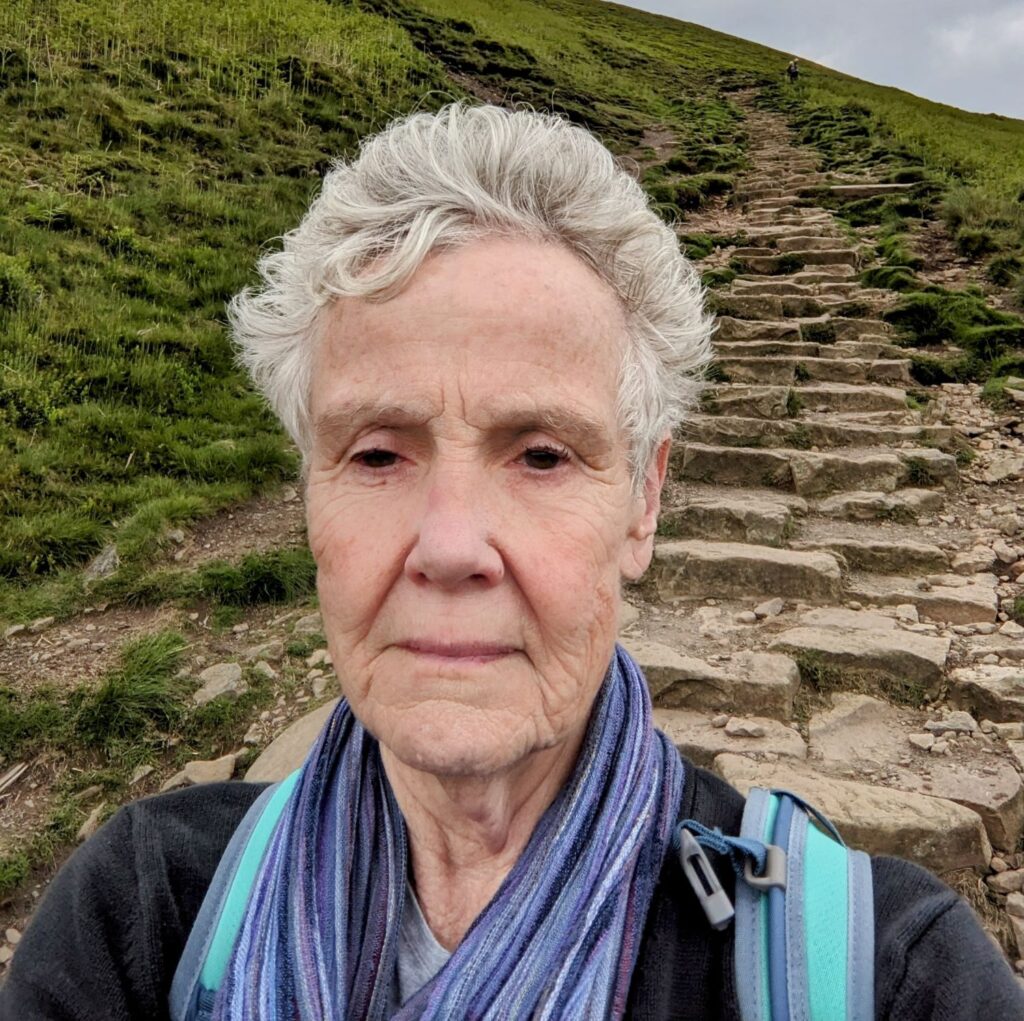
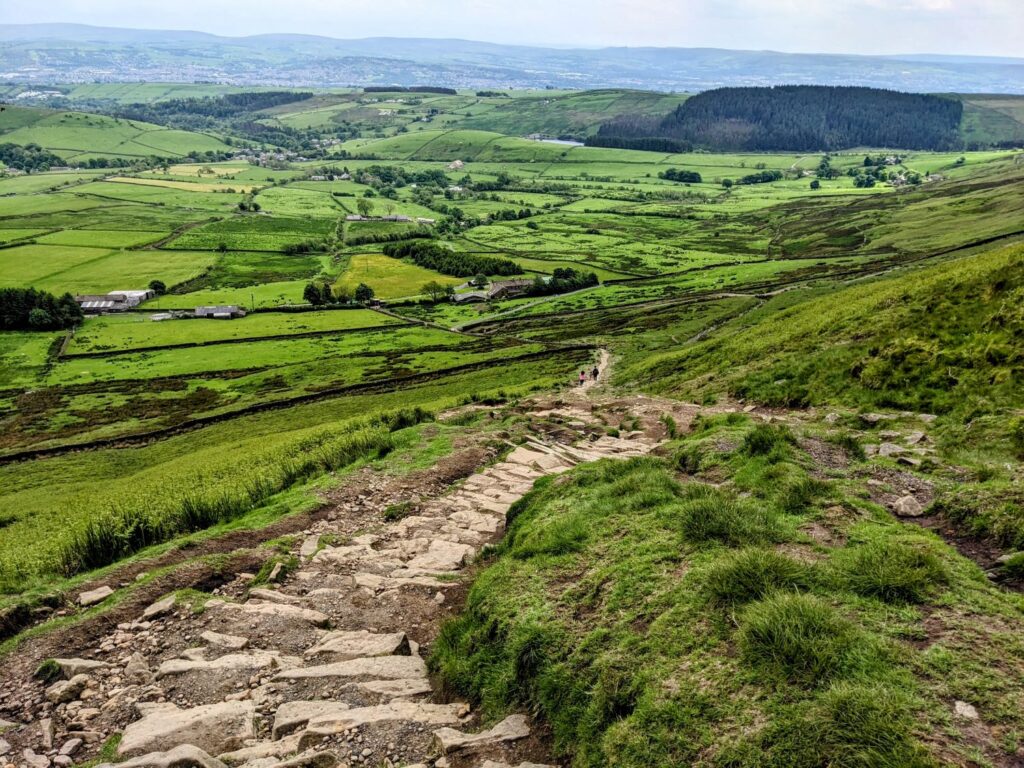
The Lake District
Have you ever visited somewhere new and said to yourself, ‘I belong here. This feels right.’? That feeling never left me when I visited the Lake District. By kismet, a friend of mine from my little village in Ireland was visiting family in England while I was there, so we took a several-day excursion to the Lake District together. From the start, we had decided that we would take the road less traveled, when possible. What could have taken us 1.5-2 hours on the M6 to reach our destination in the north lakes region from Accrington instead morphed into the better part of a meandering day.
So we began our journey by wending our way through the Forest of Bowland, which really isn’t a forest at all but a stunning moor. It is easier said than done to traverse the area, though. Serviceable roads are not chockablock, but we managed largely by seeing a town on the paper map (yes, a real map; Tina is a fan and I should be) and plugging the name into Google maps. It took a few such adjustments but we managed to find our way through. The Forest of Bowland is quite literally a jaw-dropping place, each turn of the road bringing some new vista, and well worth the fidgeting.
We came out south of Lancaster, and then took the smaller A6 instead of hopping on the M6. Entering the Lake District is like entering an idyll. Stately old sycamores dot the rolling landscape, water either river, stream, brook or lake peeks out here and there. I could readily see why generations of writers and poets were mesmerized. And why it was named a World Heritage Site by UNESCO in 2017. It is a gorgeous, lush, verdant place and should be on the itinerary of anyone visiting England. Truly, it felt so familiar and so comfortable to me, I was quite taken aback.
We spent our first night in the village of Greystoke, not far from Penrith. Because it’s not on a lake, it is very much not on the tourist trail and sweeter for that. We stayed at the very nice Stafford House B&B on the grounds of Greystoke Castle, and to get there passed under a walled entrance by what clearly was once a guardhouse. Talk about going back in time! A word here about the castle. It was built in 1069 by Llulph de Greystoke, a baron. But since 1571, it has been in the hands of the Howard family, when Thomas Howard, the 4th Duke of Norfolk, married into the family who owned the property.
The Howard name rang a bell to me, so I dug a bit and found that Thomas Howard’s grandfather, also Thomas, was uncle to BOTH Anne Bolyn and the unfortunate 5th wife of Henry VIII, Catherine Howard, who like her cousin was beheaded. She was 18 at the time. Nice guy. Anyway, the castle was largely destroyed by Parliamentary troops in 1648 because the 4th Duke was both Catholic and a royalist – a death knell in England as it was in Ireland around the same time. But it was later rebuilt.
One more note about Greystoke. Edgar Rice Burroughs, creator of the Tarzan series of books, apparently was fascinated with the Howard family and Greystoke Castle. He created the character John Clayton II, Viscount Greystoke, who was born at the castle and as a baby was marooned in Africa after mutineers apparently did away with his parents. He was raised by apes and the rest, as we know, is history.
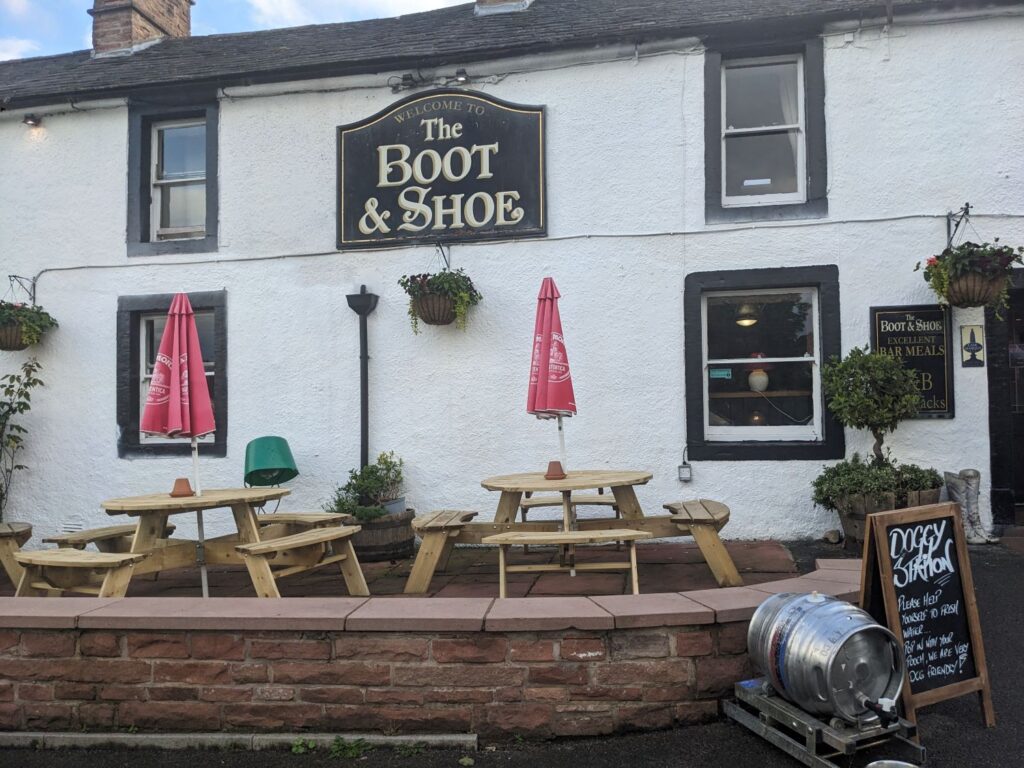
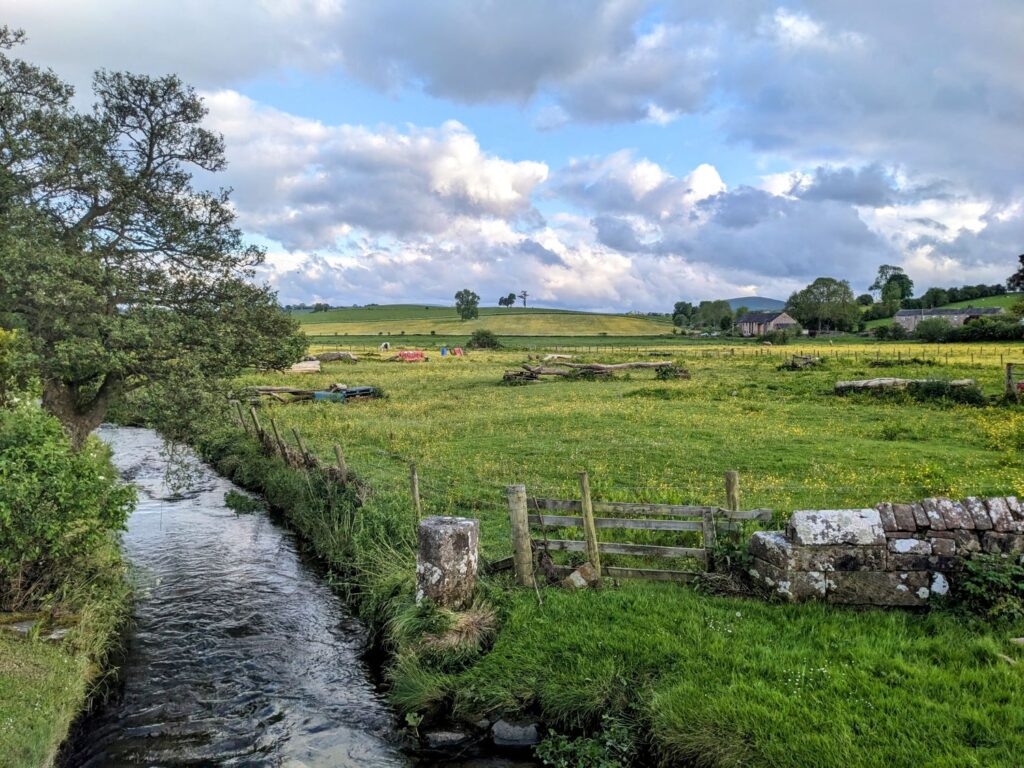
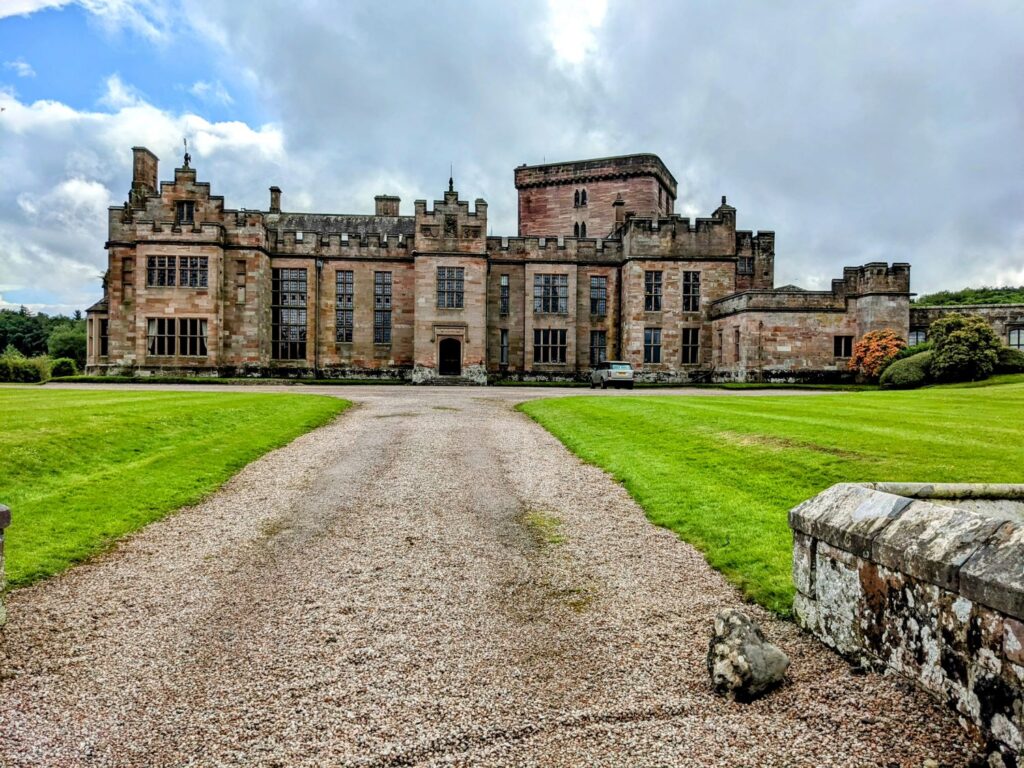
The following day, on our way to Grasmere, we stopped just outside of Keswick at the Castlerigg Stone Circle – the archaeological and mythological allure drawing me. If your travels allow you to go there, I’d highly recommend it. Dating to about 3000BC during the Neolithic period, it sits on a plateau surrounded by mountains in the Lake District National Park and is an eerie, magical place of ancient energy. FMI, Wikipedia is the best: https://en.wikipedia.org/wiki/Castlerigg_stone_circle
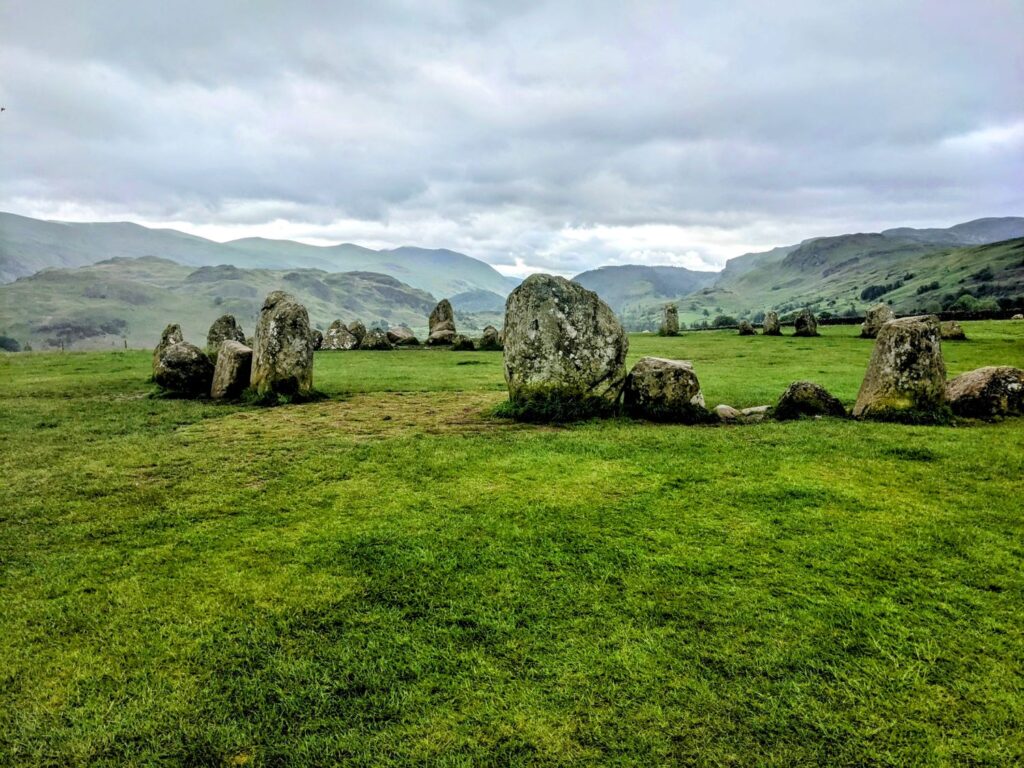
Grasmere is a must stop for two reasons: the Grasmere Gingerbread Shop and Dove Cottage, home of William Wordworth and his sister Dorothy.
Tom, my British son-in-law, has very fond memories of visiting the Grasmere Gingerbread Shop when on holiday with his parents as a boy. If I was going to be in Grasmere, he said, might I stop by? His parents, too, are fans. But I was warned that if I do, I might have to queue for the better part of an hour, the place is so popular. Well, how could I resist? Actually, we arrived earlyish in the morning, so the lines weren’t bad (although they were quite lengthy when we left town later in the day!).
I had no idea what I was waiting to buy. When I arrived inside the microscopic shop, there on the shelves were arrayed a wall of paper-wrapped cakes. The cake itself is flat and rather dense, about the size of a protein bar, not gingerbread as commonly understood. Extraordinarily gingery and extraordinarily buttery, like a shortbread in that regard, it is a very unusual nosh (and no doubt very fattening!). My English family were delighted with themselves when I brought them back. FMI: https://www.grasmeregingerbread.co.uk/
I took a course in college on the Romantic poets of England and America – early 19th poets who turned away from the urbanization happening all around them and found inspiration in nature. That was a long (long) time ago, but I still remember connecting with the idea of romanticism, the idea of looking toward the natural world and toward aesthetic beauty for inspiration. William Wordsworth (1770-1850) was among the most well-regarded of the British poets that included Shelley, Keats, Byron, Blake and his good friend, Coleridge. In 1799 when he was 29, he and his sister Dorothy came to Grasmere to live in Dove Cottage, where he wrote some of his most important works.
As a feminist, I was drawn to Dorothy, who he credits as his conduit to the natural world. No one hears about her, of course, but she was a writer as well. Her ‘Grasmere Journal’ was just that, a chronicle of the amazing place that is the Lake District. I give you this quote from the journal: “I never saw daffodils so beautiful. They grew among the mossy stones, around and about them. Some rested their heads upon these stones as on a pillow for weariness and the rest tossed and reeled and danced and seemed as if they verily laughed with the wind that blew upon them over the lake. They looked so gay, ever glancing, ever changing.” Natural world, indeed!
Admission to Dove Cottage and the Wordsworth museum is not inexpensive: £15 for an adult. But it is owned by the Wordsworth Trust — like the Brontë Society, a private nonprofit organization — so admission becomes an important source of funding. FMI: https://wordsworth.org.uk/
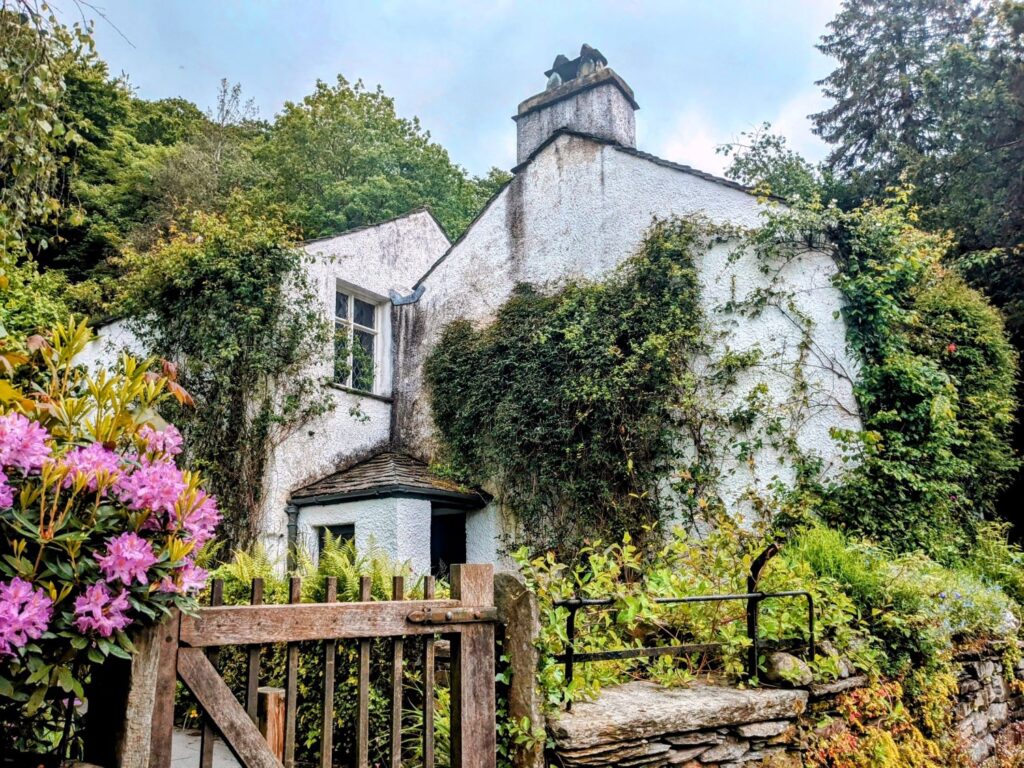
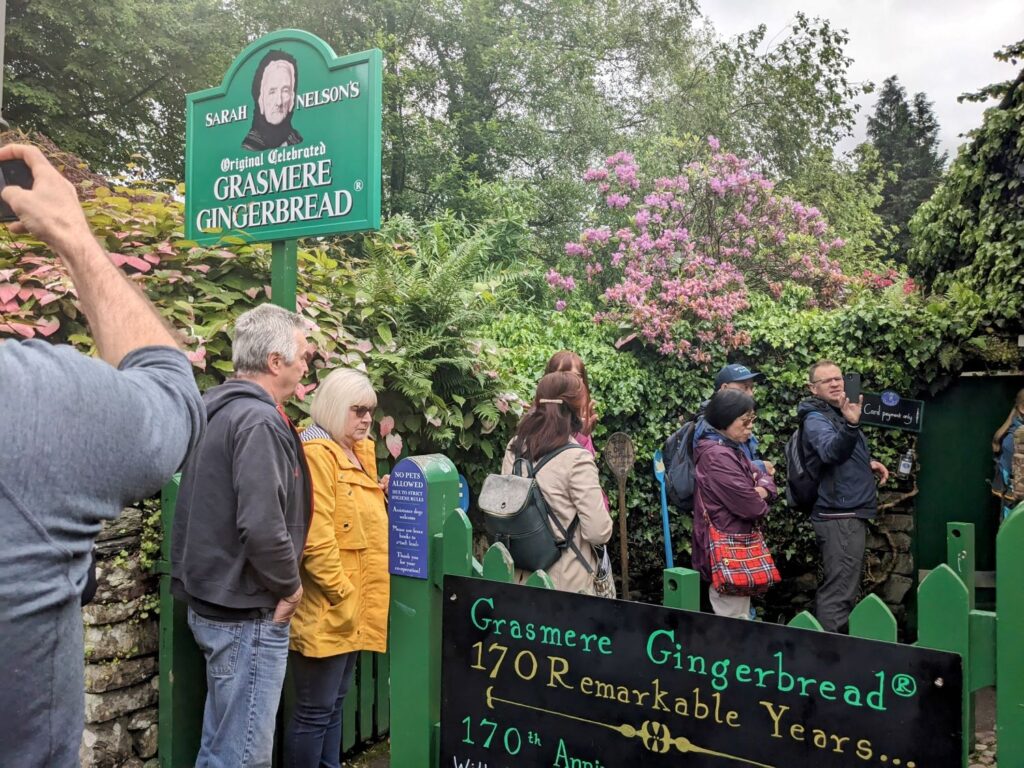
Before I leave the Lake District and this way-too-massive blog, there is one more visit I wish to share with you – the last of the triumvirate of literary homes and far and away my favorite. If there was one place that I felt was really the nexus or axis mundi of the Lake District, it was the town Near Sawrey where once lived Beatrix Potter at her home, Hill Top. We traversed quiet country roads to get to the small and intimate village, not close to the madding crowd.
And Hill Top is so worth visiting, if for no other reason than learning that Potter was so much more than the author and illustrator of children’s tales. To wit:
*She had a long relationship with the National Trust and upon her death, bequeathed Hill Top and all of its furnishings to the organization. Everything right down to the curio or book is exactly where it was when Potter died aged 77, and she instructed that nothing be touched.
*She was born into a wealthy family, and therefore had the means with which to purchase various properties and pursue her writing career.
*She studied mycology as a young woman, and penned minutely accurate drawings of mushrooms and fungi, writing a paper for the Linnean Society in 1897 that she could not present because she was a woman.
*She began her career by printing Christmas cards adorned with her woodland and field creatures. After self-publishing her tales, a publisher that had previously rejected her gave her a whirl…woman notwithstanding.
*She was an accomplished farmer and bought farmland in the vicinity of Hill Top, at least one purchase to save it from developers. In this, she was recognized as an important Lakes District conservationist. She bred and raised Herdwick sheep, and not long before her death became President-elect of the Herdwick Sheepbreeders Association. It was one of her proudest accomplishments.
Really, she was a remarkable human being and Hill Top, with its extensive gardens and nestled into this beautiful landscape, is well worth the visit. Admission is £15 and must be booked online in advance. Have a tea and a bite to eat on the terrace of the Sawrey House hotel next door when you’re done. FMI: https://www.nationaltrust.org.uk/visit/lake-district/hill-top
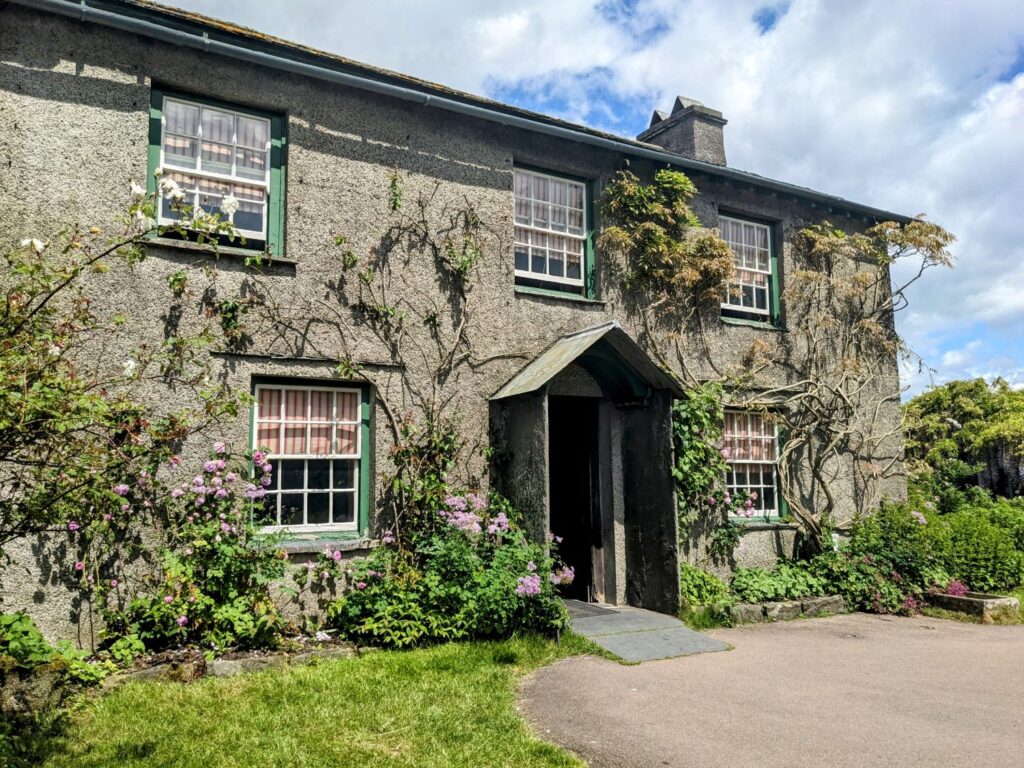
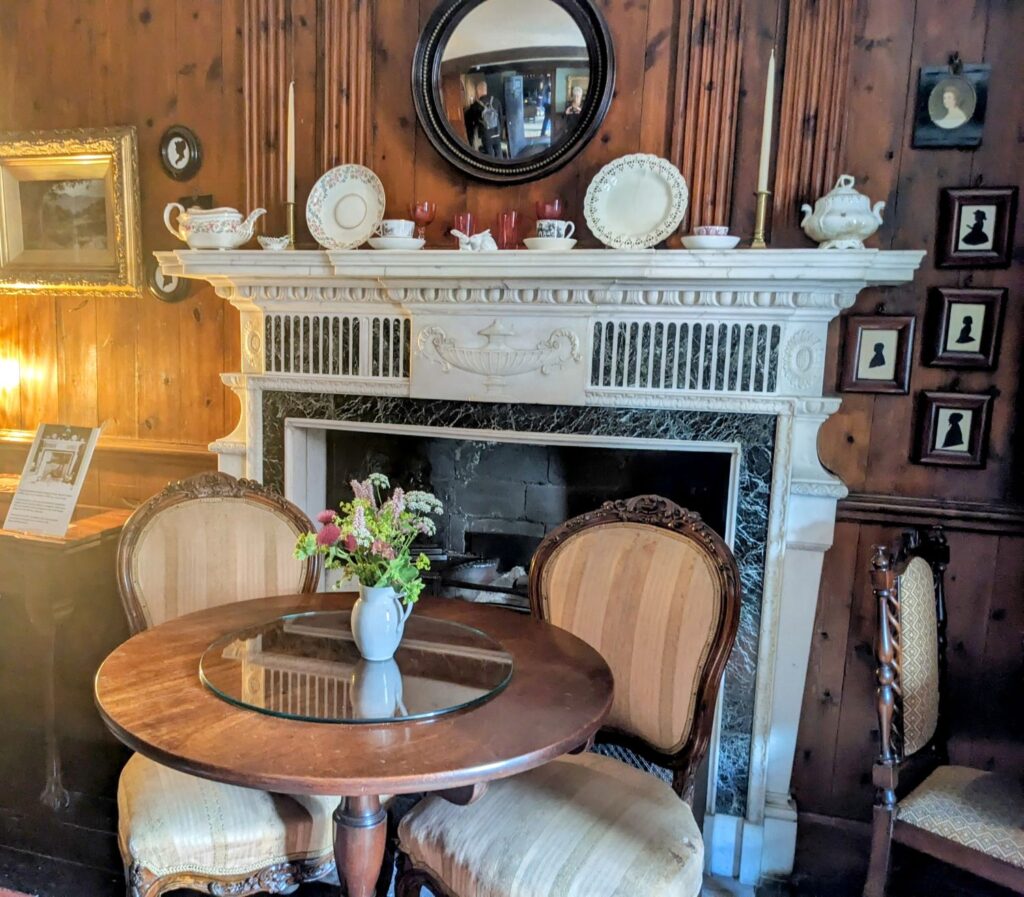
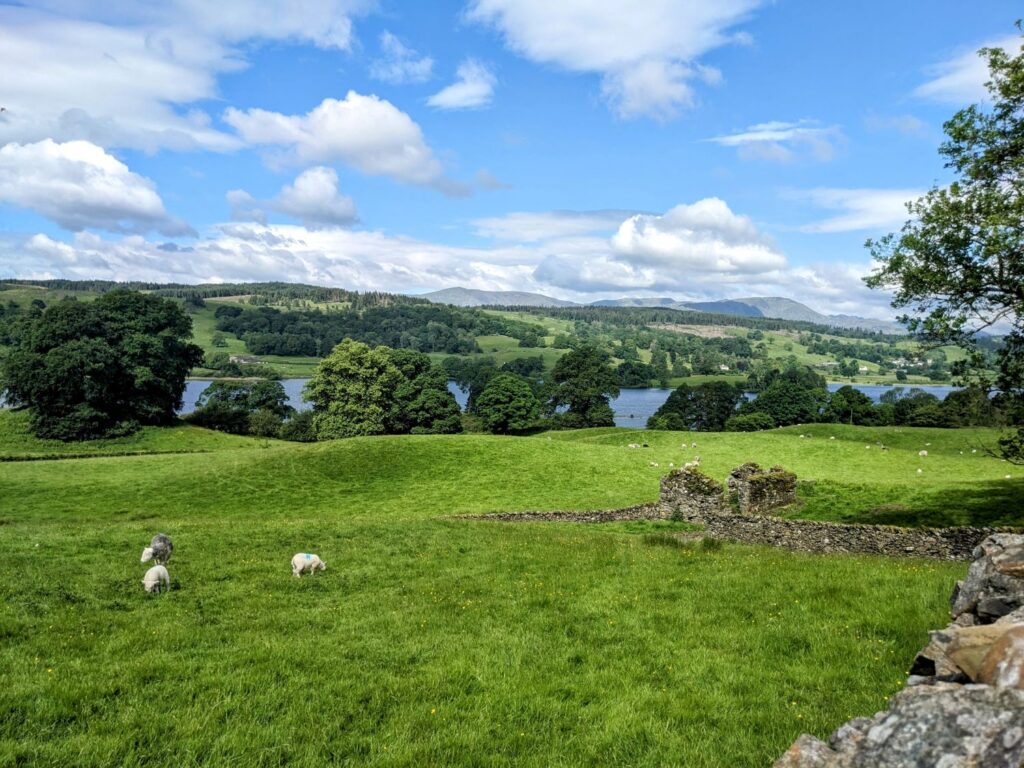
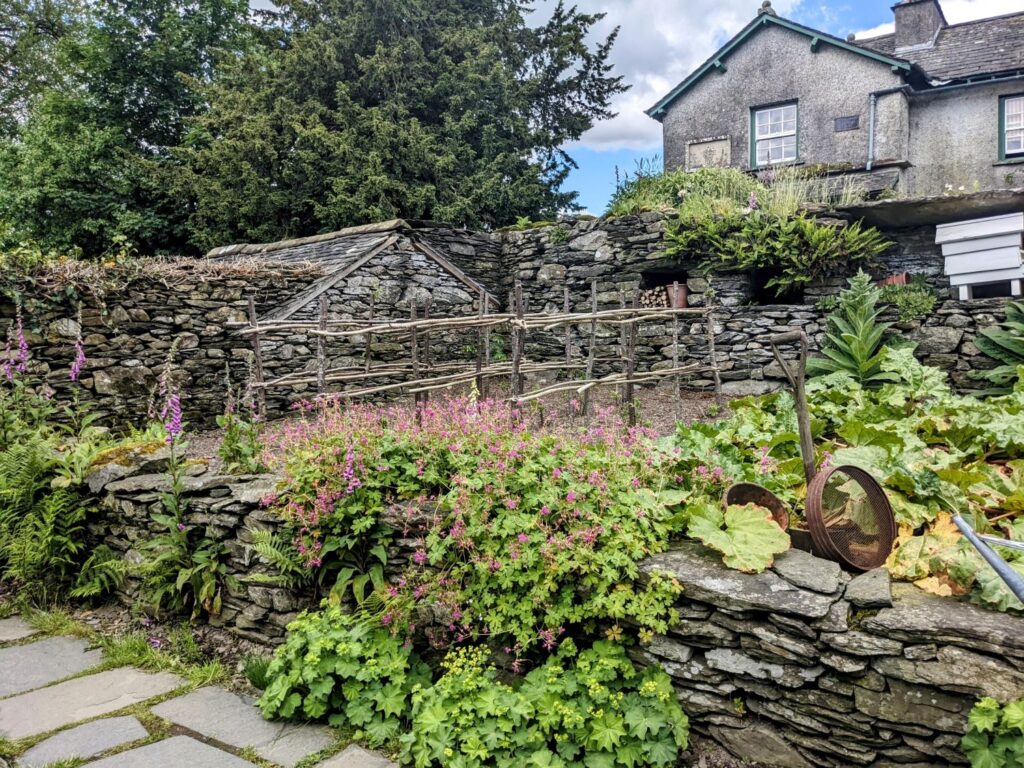
OK folks. I’m calling it a wrap. If I actually kept your attention to the end of this blog, bravo. But I completely understand if not. Next travel plans are back to Maine in August for sun, lobster, homegrown tomatoes and corn. I can’t wait! Maybe I’ll write a blog about being a native cum visitor to my own hometown. Before year’s end, I expect I’ll be traveling to Nairobi, Kenya, where my daughter and her little family are settling this fall. So stay tuned.
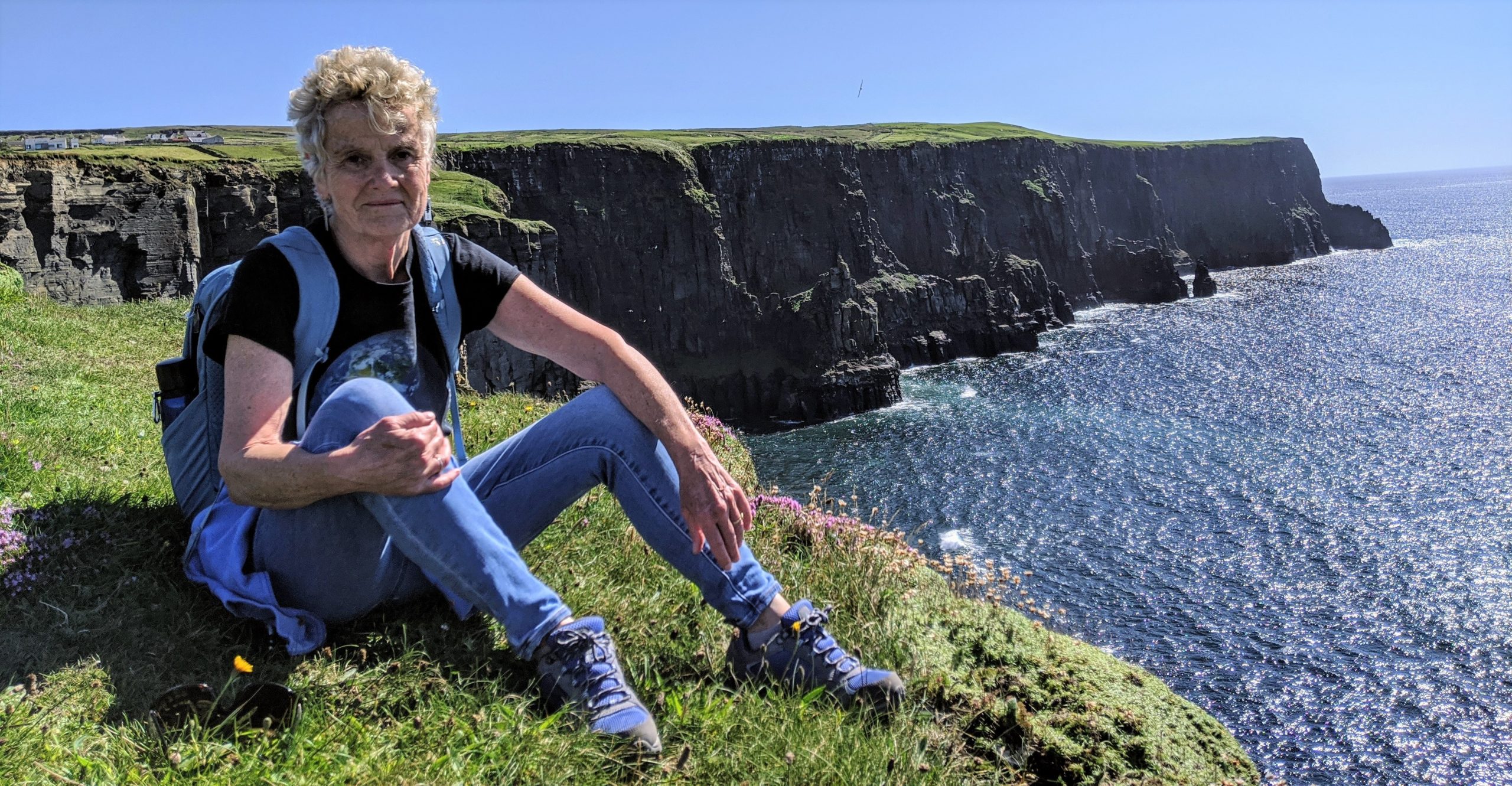
Reader Comments
Great blog. Deborah! So many enticing places to visit! Can’t wait to see you in August and September!
Wow, Deborah, SO much rich history! from Picasso, who I love… to Charlotte Bronte, and beyond. Thank you for sharing that wonderful journey!
Each place you have traveled to is a “wonder” and an “awe”! Love seeing you at these places…makes me fell still connected to you as you continue to traverse this beautiful globe. Counting the days until we can hug 🙂
Sooooo fun to share those travels with you! Thank you, thank you for that little mid-summer respite…would love to pop up in August to visit with the fam….FYI, Jo’s daughter, Hannah, just this morning delivered her fourth child, finally a “little woman”. Josephine Zelda : )
I am drawn in by the feeling that I am right there with you! How I wish. But it’s a lovely travelogue and dream, especially on a HOT day and Covid isolation…….
Loved reading about your travels…appreciate the photos and links and the ‘tips.”